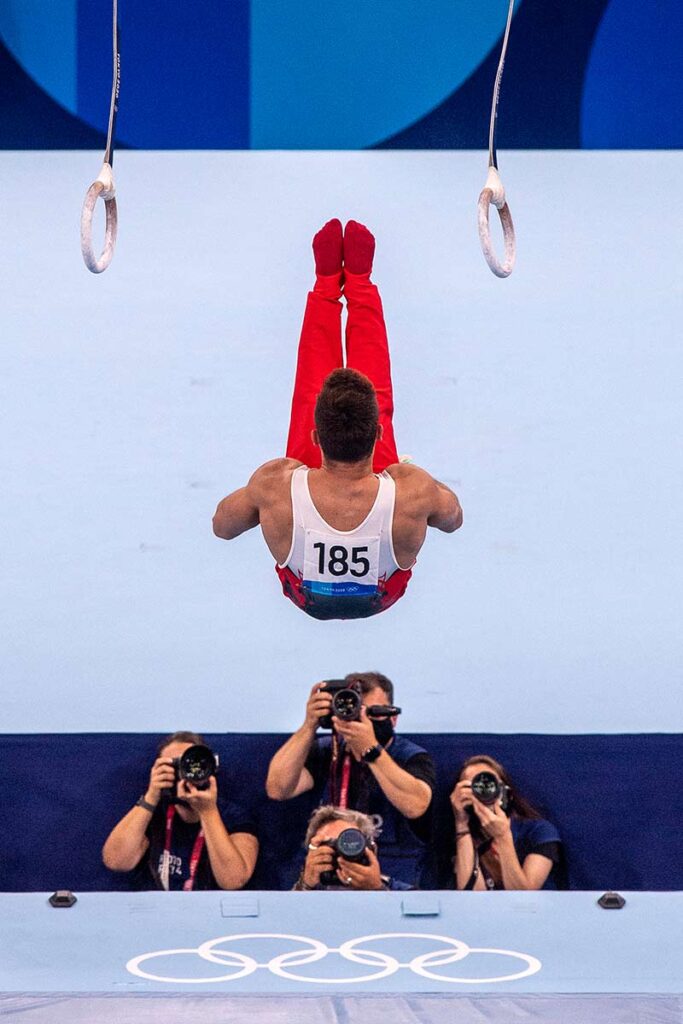MARK EDWARD HARRIS | THE MIRACLE GAMES
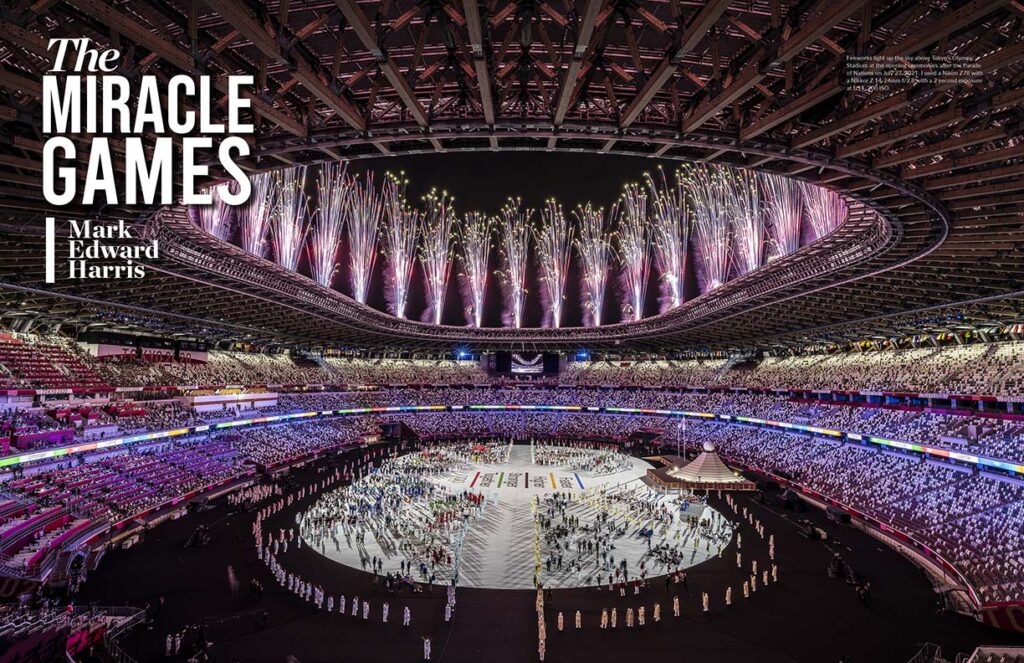
The Games of the XXXII Olympiad were historic even before tennis star Naomi Osaka lit the flame in the cauldron with her relay torch to commence them. The concept of bringing athletes from every corner of the earth together for competing in the middle of a global pandemic seemed absurd. Yet they did, and the Tokyo 2020 Olympic Games were an incredible success by most accounts, including mine.
In advance of the Games, playbooks were created to guide athletes, support staff, and media – both writers and photographers – through all the protocols that were being set up to minimize the spread of COVID-19. International Olympic Committee President Thomas Bach pledged 85 percent of athletes would be vaccinated and isolated from the general public for the entirety of their stay in Japan. Members of the press, including myself, could use public transportation after two weeks as long as our daily health reports submitted through an app were cleared. A summer surge of covid cases did prevent the stands from being populated by spectators, so the television and still cameras became the sole eyes of the world to record the literally Olympian efforts of athletes.
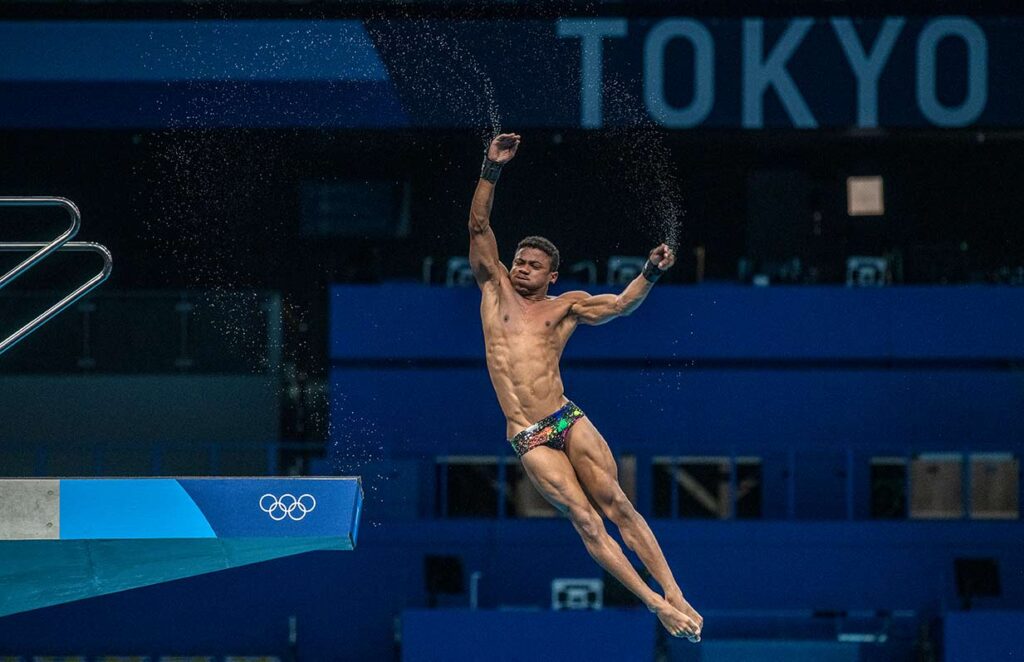
Mark Edward Harris © All rights reserved.
Before stepping on the plane in Los Angeles, I had to carefully consider what to put in my camera bag and what to leave at home. The Olympics and Paralympics offer a wide range of photo ops requiring an equally wide focal length, so I packed Nikkor lenses, giving me coverage from 14mm to 500mm.
S ince my Nikkor 300mm is an f/4 and my Nikkor 500mm is an f/5.6 making them relatively small, they were able to fit along with two Nikon bodies and a number of other lenses into my Think Tank Airport International V3.0 Rolling Camera Bag.
If I needed even longer glass, I knew I could check a lens out from the Nikon booth set up for credentialed photographers at the International Media Center in Tokyo.
I then filled my Think Tank Airport Accelerator backpack with a set of StellaPro CLx10 continuous lights for athlete environmental portraits and the new StellaPro Reflex to do a stroboscopic gymnastics study with a promising young Japanese athlete in a neighborhood gym.
These amazing demure lights can generate 20 flashes per second at full power from a battery handle and sync at my fastest shutter speed of 1/8000th of a second. From the battery handle, the Reflex has an output of 6000 lumens in the continuous mode and 9000 lumens when plugged into a 100W power supply. Bursts can be fired with Godox and Elinchrom triggers at 200 – 18000 lumens, the higher number essentially being twice the maximum power.
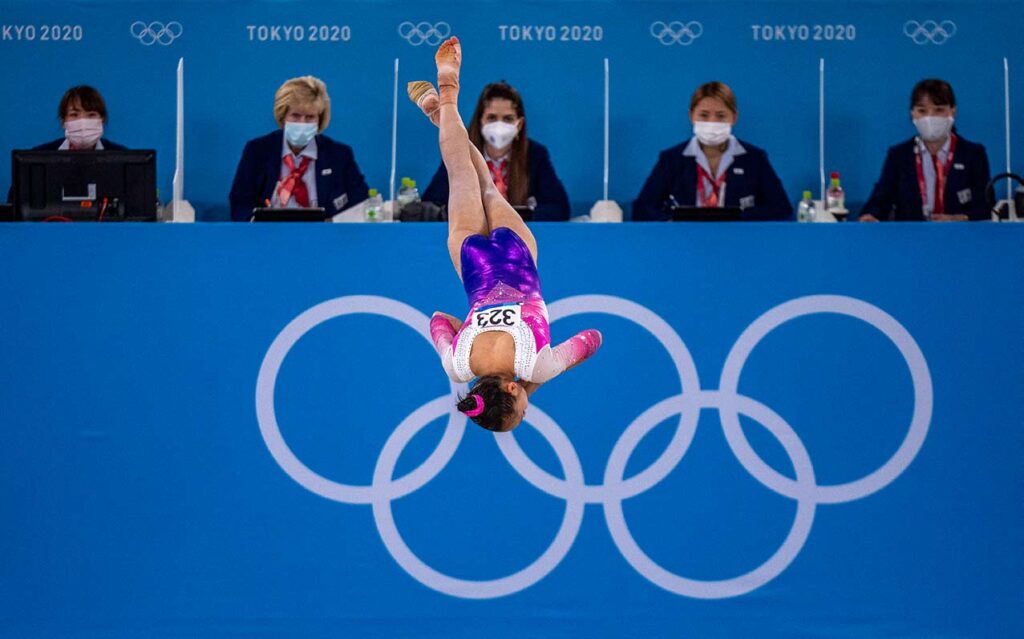
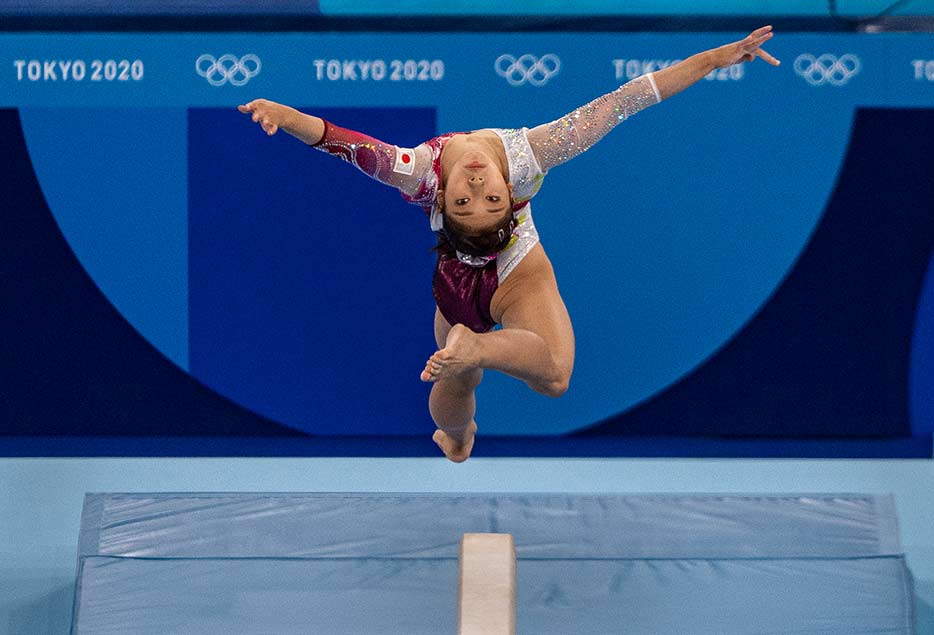
Mark Edward Harris © All rights reserved.
Still photographers cannot use strobes of continuous lights to record the action on the field of play, nor can we use tripods except for small ones at non-competition events. An example of the latter is my image of fireworks over Tokyo’s Olympic Stadium during the opening ceremonies recorded with a Nikon Z7II with a Nikkor Z 14-24mm f/2.8 set to 2 seconds, f/11, ISO 200.
At the Olympic venues, lockers were provided for photographers so we could just carry what we needed to capture the action on the field of play in our supplied photo vests and small backpacks.
The Nikon D6, with its incredibly fast follow focus ability and 14 fps motor drive, was my go-to camera for fast-action sports. For diving and running, I/2500th of a second seemed to guarantee freezing the athlete in action. The one thing about a fast motor drive and endless photo ops is that it meant I was returning to my hotel late each night with hundreds if not thousands of images. Usually, I would engage the athlete with the follow focus before the peak of action to increase the odds of a properly focused image being exposed at the decisive moment.
All these frames being exposed necessitated the use of dependable, large-capacity hard drives.
I worked with two incredibly small and fast solid-state OWC Envoy ProFX 2TB portable SSD drives. Back in the States, I have OWC Mercury Elite PRO 18TB drives for storage, but in the field, portability is the name of the game.
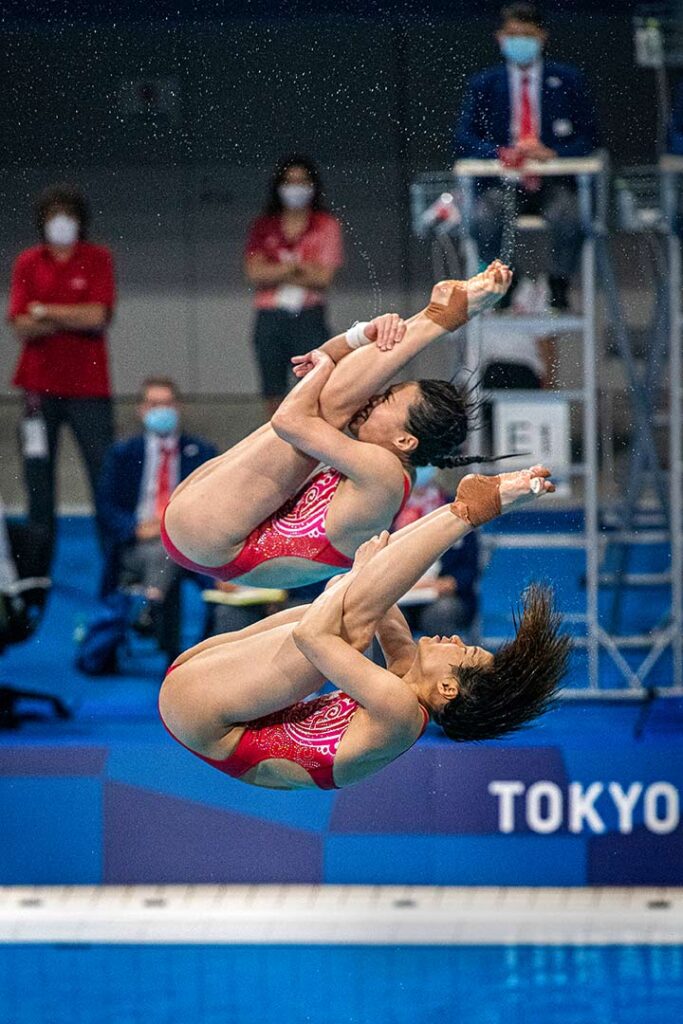
are on their way to a gold medal at the Tokyo
Olympics in the women’s synchronized 3-meter
springboard on July 25, 2021.
Mark Edward Harris © All rights reserved.
While I was shooting for magazines with some lead time, many photographers needed to get their images out to the world instantaneously, and all the venues had their photo sections hardwired with cables for immediate uploading.
Because of the economic realities of supply and demand, most international photographers returned to their native countries after covering the Olympics. I stayed to cover the Paralympics and used the two weeks in between the Games to continue my study of the tsunami that devastated the eastern coast of Tohoku in 2011.
Growing up, I was glued to the TV watching ABC’s Wide World of Sports and will never forget the opening credits narrated by Jim McKay, “Spanning the globe to bring you the constant variety of sports… the thrill of victory… and the agony of defeat… the human drama of athletic competition…” And now here I was in Tokyo, not only to witness the ultimate sporting events but to record them camera-in-hand.

Despite having one atrophied arm and a severely curved backbone due to polio, my father was a great athlete. This might have given me a little extra insight into the lives of Paralympians, and I generated a number of features focused on the backstories of athletes who overcame incredible odds to be in Japan’s capital representing their countries in their chosen sports. Paralympians have at least one of 10 eligible impairments: Impaired muscle power, impaired passive range of movement, limb deficiency, leg length difference, short stature, muscle tension, uncoordinated movement, involuntary movements, vision impairment, or intellectual impairment. They then, of course, have to have incredible athletic ability and make it to the top of the field in their homeland. One of the athletes I interviewed and photographed who can serve as a shining example is Team USA swimmer Haven Shephard who lost her legs as a baby when her biological parents – who were married to other people – committed suicide with bombs strapped to themselves.

Since I was particularly conscious of the historic nature of the Games taking place during the middle of a pandemic,
I would often pick vantage points or camera angles where I could include signage for context.
I would often try to make it to three events a day because of that awareness. Though it could be a bit exhausting, to say the least, I always kept in mind what my good friend and fellow lensman David Burnett said over a late-night bowl of ramen, “We can sleep in September.”

Mark Edward Harris © All rights reserved.

